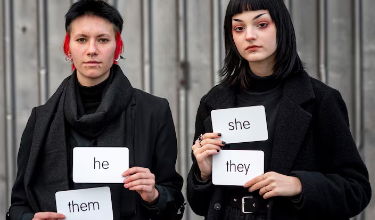The Disappearance of Libby Offutt: Examining the Case and Its Lasting Questions

The mysterious disappearance of individuals often leaves behind a void filled not only with grief but with a relentless pursuit for answers, a narrative that becomes public property and a subject of enduring speculation. The case of Libby Offutt is one such story, a poignant and complex tragedy that unfolded in the public eye and continues to resonate as a somber chapter in true crime discourse. Her vanishing in the late 1990s, intertwined with the subsequent actions and confession of her brother, John Offutt, created a narrative that is as baffling as it is heartbreaking. To examine this case is to navigate a difficult terrain where established facts meet unsettling uncertainties, where a judicial outcome provides a form of closure yet fails to answer every lingering question. This article aims to provide a thorough and respectful examination of Libby Offutt’s disappearance, detailing the known timeline of events, the central figure of John Offutt and his controversial confession, the media’s role in shaping the story, and the profound, unresolved questions that continue to define this case for many who have followed it over the years. Our goal is to present a clear-eyed view of the known facts while acknowledging the shadows that still remain.
The Timeline of Events: A Family Tragedy Unfolds
The story of Libby Offutt’s disappearance begins with the simple, terrifying fact that she was reported missing in 1998 from the Washington D.C. area. The initial circumstances surrounding her vanishing were immediately concerning, triggering a law enforcement investigation aimed at locating the vibrant young woman. As is often the pattern in such cases, the focus of the investigation inevitably turned inward, toward her immediate family and social circle, in an effort to piece together her last known movements and identify any potential conflicts or dangers. It was during this intense period of scrutiny that her brother, John Offutt, became a person of interest. The progression from a missing person’s case to a suspected homicide was a devastating turn for the family and community, marking the point where a private tragedy escalated into a public criminal investigation. The case did not see a swift resolution; instead, it developed over years, characterized by painstaking investigation, growing public interest, and the agonizing wait for answers from her loved ones. This timeline is crucial for understanding the context of the case, as it underscores the prolonged nature of the uncertainty and the immense pressure that builds upon both the investigators and the family when a resolution remains elusive for an extended period.
John Offutt: A Central Figure and a Controversial Confession
The narrative of Libby’s disappearance is inextricably linked to her brother, John Offutt, whose name became central to the case’s resolution and its enduring mysteries. After years with little progress, John Offutt was formally charged in connection with his sister’s death. The legal proceedings took a significant turn when he entered an Alford plea to a charge of second-degree murder. An Alford plea is a specific legal maneuver in which a defendant does not admit guilt but concedes that the prosecution has sufficient evidence to secure a conviction. This type of plea is often interpreted as a pragmatic choice, avoiding the risk of a potentially harsher sentence after a trial while still resulting in a criminal conviction. In court, John Offutt presented a story of a tragic accidental death during a heated argument, a narrative that provided a framework for the legal resolution but which was met with skepticism by some observers and, presumably, members of his own family. The court accepted his plea and sentenced him to a prison term, providing a judicial conclusion to the case. However, the nature of the Alford plea and the specific details of his account left a cloud of ambiguity over the events, creating a division between legal closure and emotional or factual certainty for those seeking to understand exactly what happened to Libby Offutt.
Media Portrayal and the Public Fascination with True Crime
The case of Libby Offutt, like many others of its nature, was not confined to court documents and police reports; it became a story for public consumption, amplified by the media and the growing cultural appetite for true crime. Television programs, news features, and online forums dissected the details, often framing the story within the compelling and tragic theme of familial conflict leading to unthinkable violence. This media spotlight served a dual purpose: it maintained public awareness of the case, which can sometimes pressure authorities to continue their investigations, but it also risked simplifying a deeply complex human tragedy into a narrative designed for viewer engagement. The family, already enduring an unimaginable loss, had to navigate their grief under the scrutiny of this public gaze, where every detail is analyzed and every statement is interpreted. The portrayal of John Offutt shifted from a grieving brother to a convicted defendant, a transformation that the media chronicled with intense interest. This public dissection of the case highlights a broader cultural phenomenon where real-life tragedies become sources of fascination, raising important questions about the ethics of storytelling and the impact of media saturation on the victims’ families and the judicial process itself.
The Unanswered Questions and Lasting Impact
Despite the legal resolution achieved through John Offutt’s Alford plea and subsequent sentencing, the case of Libby Offutt’s disappearance is marked by a series of profound and lingering questions that continue to define its legacy. The central uncertainty revolves around the full, unvarnished truth of what transpired on the day she died. An Alford plea, by its very nature, does not require a detailed public accounting of events, and the version of events presented in court may not represent the complete story. This has led to persistent speculation and doubt among those following the case, with questions remaining about the precise sequence of events, the motive, and whether all relevant information has been brought to light. For the family and friends of Libby Offutt, this lack of definitive closure must compound their grief, leaving them with a judicial outcome but perhaps without a sense of true peace or understanding. The case serves as a somber reminder that the legal system, while designed to deliver justice, does not always provide answers that satisfy the human need for a complete and coherent narrative. The lasting impact is a story that is technically closed but emotionally and factually unresolved for many, a tragedy that continues to evoke sympathy for the victim and a deep contemplation on the complexities of truth and justice.
Conclusion
The disappearance and death of Libby Offutt remains a deeply sorrowful story, a human tragedy that underscores the limitations of both investigation and the legal system in providing holistic closure. While the judicial process reached its conclusion with the conviction of John Offutt, the nuances of an Alford plea and the unanswered questions surrounding the case have left an indelible mark of ambiguity. It is a narrative that encompasses the raw pain of a lost life, the complexities of a fractured family, and the relentless public and media search for a clear narrative where one may not fully exist. Beyond the headlines and the true crime discussions, it is vital to remember Libby Offutt as an individual, whose life was cut short and whose story serves as a poignant reminder of the enduring impact of violence and the elusive nature of absolute truth. For the public, the case is a subject of fascination and analysis, but for those who knew and loved her, it is a permanent, painful loss, a story where the search for understanding may never truly end.
Frequently Asked Questions (FAQ)
Q1: Who was Libby Offutt?
Libby Offutt was a young woman who disappeared from the Washington D.C. area in 1998. Her case gained significant public attention and became a well-known true crime story, culminating in the conviction of her brother, John Offutt, for her death.
Q2: What is an Alford plea?
An Alford plea is a legal plea in the United States where a defendant does not admit guilt but acknowledges that the prosecution has enough evidence to convict them. It has the same legal effect as a guilty plea and results in a conviction, but it allows the defendant to maintain their innocence while accepting the sentence.
Q3: What was John Offutt’s sentence?
After entering an Alford plea to a charge of second-degree murder in the death of his sister, Libby Offutt, John Offutt was sentenced to a prison term. The specific length of the sentence can be found in court records, but the conviction stands as the legal resolution of the case.
Q4: Why does this case remain controversial or unresolved for some people?
The use of an Alford plea means a full admission of guilt and a complete account of events was never part of the legal record. This, combined with the nature of the crime within a family, has led to lingering questions and speculation about the precise circumstances and motive, leaving some with a sense that the whole truth remains unknown.
Q5: Where can I find more information about this case?
Information about the case has been covered by various news outlets and featured on true crime television programs. For the most accurate legal details, official court documents from the relevant jurisdiction (likely Maryland or Washington D.C. area) would provide the definitive record of the proceedings.



